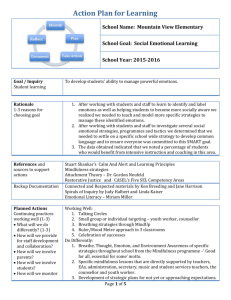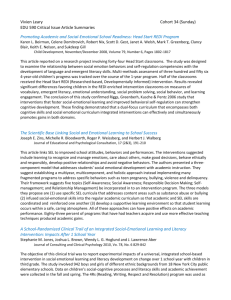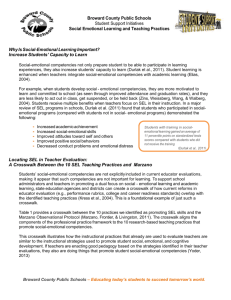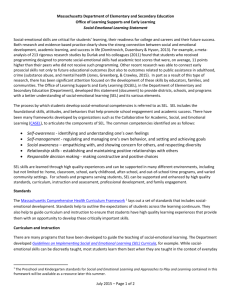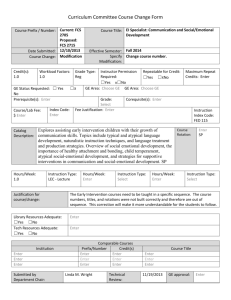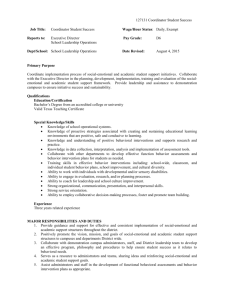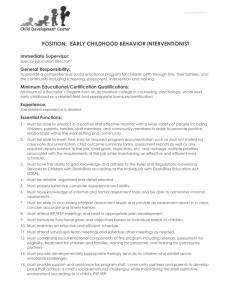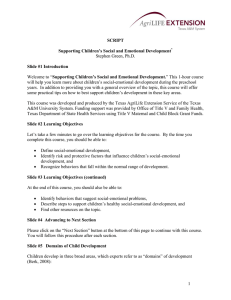Kwayhquitlum APL 2015-16
advertisement
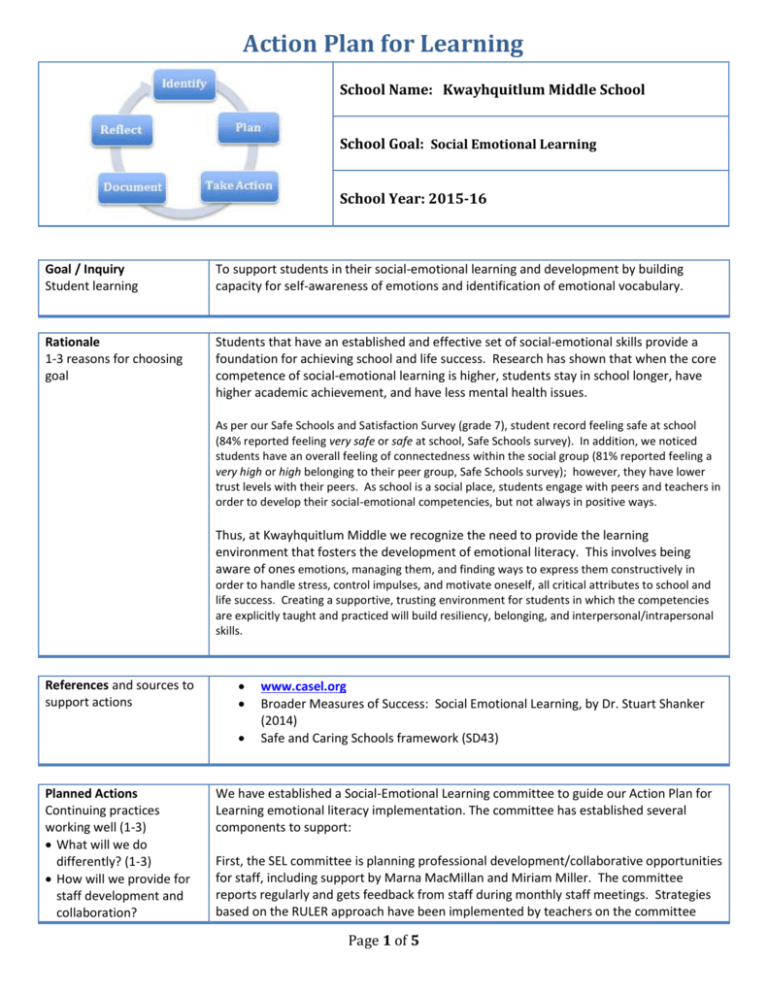
Action Plan for Learning School Name: Kwayhquitlum Middle School School Goal: Social Emotional Learning School Year: 2015-16 Goal / Inquiry Student learning To support students in their social-emotional learning and development by building capacity for self-awareness of emotions and identification of emotional vocabulary. Rationale 1-3 reasons for choosing goal Students that have an established and effective set of social-emotional skills provide a foundation for achieving school and life success. Research has shown that when the core competence of social-emotional learning is higher, students stay in school longer, have higher academic achievement, and have less mental health issues. As per our Safe Schools and Satisfaction Survey (grade 7), student record feeling safe at school (84% reported feeling very safe or safe at school, Safe Schools survey). In addition, we noticed students have an overall feeling of connectedness within the social group (81% reported feeling a very high or high belonging to their peer group, Safe Schools survey); however, they have lower trust levels with their peers. As school is a social place, students engage with peers and teachers in order to develop their social-emotional competencies, but not always in positive ways. Thus, at Kwayhquitlum Middle we recognize the need to provide the learning environment that fosters the development of emotional literacy. This involves being aware of ones emotions, managing them, and finding ways to express them constructively in order to handle stress, control impulses, and motivate oneself, all critical attributes to school and life success. Creating a supportive, trusting environment for students in which the competencies are explicitly taught and practiced will build resiliency, belonging, and interpersonal/intrapersonal skills. References and sources to support actions Planned Actions Continuing practices working well (1-3) What will we do differently? (1-3) How will we provide for staff development and collaboration? www.casel.org Broader Measures of Success: Social Emotional Learning, by Dr. Stuart Shanker (2014) Safe and Caring Schools framework (SD43) We have established a Social-Emotional Learning committee to guide our Action Plan for Learning emotional literacy implementation. The committee has established several components to support: First, the SEL committee is planning professional development/collaborative opportunities for staff, including support by Marna MacMillan and Miriam Miller. The committee reports regularly and gets feedback from staff during monthly staff meetings. Strategies based on the RULER approach have been implemented by teachers on the committee Page 1 of 5 How will we involve parents? How will we involve students? How will we monitor progress and adjust actions? Recognizing emotions in self/others; Understanding causes and consequences of emotions; Label emotions accurately; Expressing emotions accurately; Regulating emotions effectively). with invitation for other staff to observe and reflect (RULER approach: Parents were involved via newsletter updates, PAC meetings, and a parent information night with Miriam Miller. Our second planned action involves a pilot project with 2 school teams with restorative practitioner, Alex Larson, demonstrating effective community circles within those classrooms. Although a few classrooms already use community circles in one format or another, our hope is that all or a majority of classrooms will use the practice of community circles to build safe, caring classroom communities. Students have provided valuable feedback to classrooms involved in community circles, many stating it is a positive opportunity to share about their learning environments and that they would like to have them more frequently than the scheduled once a week timeframe. Our third planned action involves the agreement of all staff around the use of creating a Classroom Emotional Intelligence Charter at the beginning of the 2015-16 school year. The purpose of the charter is to co-create with students classrooms that are safe, caring, well-managed, participatory learning environments. The process is recommended to take place over a period of time, and as the year progresses, change portions to reflect new emotions, behaviours, etc. Through the guidance of Miriam Miller, staff have begun their own process of creating a Staff charter in preparation of leading this in individual classrooms. o Backup Documentation Kway Middle SchoolSafe Schools Report 2014.pdf SD43 MDI Report 2014-15 Kwayhquitlam Middle.pdf Page 2 of 5 Documentation of learning Key evidence of change How did your actions make a difference? Choose 1-3 pieces of evidence to demonstrate the impact your actions have had on student learning to meet your goal. Documentation could include video, survey results, performance standard data, anecdotal evidence, work samples, etc. As the school year has progressed, we have seen that our actions are beginning to make a difference. First, staff have been much more intentional in their actions related to social-emotional learning, at classroom, team and school-wide levels. There has been a noticeable increase in the discussions around social-emotional learning on a casual basis and structured format (e.g. staff meetings), including team meeting minutes showing the action plans of teams to support students in this area. There has been greater collaboration amongst teachers and administration with Learning Services staff and outside facilitators, such as Marna MacMillan, Alex Larson, and Miriam Miller. Second, there have been anecdotal reports to support growth of emotional literacy at Kway. Classrooms that have been experimenting with community circles and are part of the pilot project have had groups of students solve intense emotional situations using the circle structure taught in the classroom. Staff members participating with community circles note that students feel more connected to each other, have greater understanding of the impact upon others of their actions, and strategies dealing with intrapersonal conflict, such as gossip, exclusion, etc. Feedback given by students and parents indicate students are developing core competencies of social-emotional learning as a result, such as empathy towards others when hurtful actions take place. Students report they enjoy the community circles and would like them to occur more often. Backup Documentation Reflection Highlights Where are we now? What are some patterns emerging? What surprised you? What conclusions / inferences might you draw? How does this inform potential next steps? As this is the first year of our school goal focusing on social-emotional learning, we are pleased with our progress to date. Our major intent was to get a clearer sense of direction in terms of which SEL competency to focus on. We discovered that we need to develop a greater capacity for students' self-awareness in recognizing their emotions, thoughts, and influence on behaviour, specifically in the area of supporting students' development of emotional vocabulary. As we proceeded, we have found it easier to develop these strategies by working with a smaller group of teachers and students, rather than the entire school community all at once. There have been opportunities for staff involved to share highlights of what has gone well with other staff, creating casual conversations about supporting socialemotional learning of students. For next year, our next steps involve continuing to develop the structure of and belief in community circles and the classroom emotional intelligence charter, as guided by our social-emotional committee. Our goal is to support students' becoming more self-aware about themselves so they can understand their emotions, thoughts, and actions across a variety of contexts. We realize not all staff are equally comfortable or skilled in carrying this out. At the beginning of the year, in order to establish a baseline of staff use of SEL strategies, we completed an informal survey of teachers and teams in their use of Page 3 of 5 strategies to support the five SEL competences (see SEL survey handout). We intend to continue supporting the development of teachers in this area through professional development with Miriam Miller and Alex Larson. We will monitor how effective and widespread the use of social-emotional learning strategies are with teachers and teams by repeating the SEL strategies survey next fall for comparisons. Backup Documentation CASEL diagram SEL strategy use survey.pdf (Delete this section if Literacy is your main goal) Literacy Data Attach the following : 2014-15 Classroom Overall Language Arts Classroom Assessment Assessments .pdf Grade 2015 Kwayquitlum.pdf School Assessment FSA results Page 4 of 5 2014-15 FSA Results 2014-15 FSA Results Reading ~ Kway Middle.pdf Writing - Kway Middle.pdf Signatures School Name: Kwayhquitlum Middle School Goal: SEL School Year: 2015-16 Submitted by School Planning Council: Title Name Principal Parent Parent Parent Recommended by Assistant Superintendent: Assistant Superintendent Board and Superintendent Approval: Board Chair Judy Shirra Superintendent Patricia Gartland Print this page, have it signed by School Planning Council, scan it and attach it here Page 5 of 5 Signature
